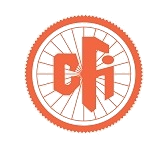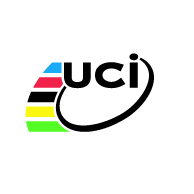
Biking is one the best ways to exercise, rehab joints and bones or just plain enjoy life. There's nothing quite like a Sunday evening bike tour. Perhaps you're trying to shed a few pounds or maybe it's time to start training for the next race. Ever consider becoming a cyclist? If so, there is a specific diet one should adhere to in order for ones body to perform at a top level and be able to rest well at night so that the body's muscles may repair and rebuild.
Eating is an intrinsic part of cycling. If you get your food intake wrong, it doesn't matter how fit you are, you could just ‘hit the wall'. Even many top professionals can get their food intake wrong; insufficient food is a big factor in explaining an unexpectedly poor performance. It is important to eat healthy foods which offer more than just calories.
A healthy cyclist diet emphasizes fruits and vegetables, whole grains, and low-fat dairy products, while including lean meats, poultry, fish, beans, eggs, and nuts. Saturated and trans fats, cholesterol, sodium, and sugar should be kept to a minimum or avoided. Your calories should come from these sources:
- 30% Fruits & Vegetables
- 30% Grains
- 15% Meat & Fish
- 15% Milk & Dairy
- 10% Fat & Sugary Foods
Fruits & Vegetables :
A large part of your diet should consist of fruits and vegetables. Most people, including athletes and cyclists, do not eat enough whole fruits and vegetables. You should be getting at least 2.5 cups of vegetables daily from a variety of sources such as dark green and orange vegetables, dry beans, and peas. 2 cups of fruit is required daily also from a variety of sources. Try to eat your fruit whole instead of from juice which can contain a good amount of added sugar.
Grains:
Grains include bread, cereal, rice, and pasta. You should be consuming at least 170 gram (6 ounces) of grains daily, Mini of that coming from whole grain sources such as whole wheat, brown rice, oats, and whole grain corn.
Meat & Fish :
Meat and fish are primary sources of protein which is important for recovery. Fish contains highly beneficial omega-3 fatty acids and should be consumed at least twice a week. Lean meat and poultry are also good sources, just watch the fat. It's typically best to bake, or grill your meat for reduced fat.
Milk & Dairy :
Milk and dairy provide a good dose of calcium required for healthy strong bones. Choose low-fat sources such as fat-free milk or low-fat yogurt or cheese. Healthy diet guidelines say to consume 3 cups of milk and dairy daily.
Fat & Sugary Foods :
Try to get as much poly and monounsaturated fat from sources such as fish, nuts, and vegetable oils. Limit your consumption of saturated fat to less than 10% of total calories and keep your cholesterol intake less than 300mg per day.
Sugar is a common form of carbohydrate and should come primarily from fruits, vegetables, and whole grains. Pay careful attention to ingredient lists since many foods have added sugar and sweeteners that contribute calories with hardly any nutrients.
Fluids :
A cyclist loses fluid both through sweating and breathing. A water bottle fixed to the bike is a must so you can keep sipping. In very hot conditions, you might need a litre per hour. On a 5+ hour ride on a very hot day, a pinch of salt in your bottle can help maintain Sodium levels. Even in winter, you lose fluid through your breath, so you still need to keep drinking on longer rides.
General Guidelines :
- Eating before a ride is advisable but try to take on food at least two hours prior to setting off and avoid fatty food.
- Remember to eat 10-15 minutes after your ride as well, as this will get energy to your tired muscles where it is needed the most and may help to prevent soreness later on.
- Longer rides should be followed by a high-carbohydrate meal in the evening to replace the calories burned during the day.
- There are also several ranges of specially formulated energy bars and sports drinks on the market that are designed to be consumed when exercising.
- Isotonic sports drinks replace salt lost during perspiration as well as carbohydrates.
So remember! Water to hydrate. Salt to hold the hydration in. Carbs to keep those legs moving and protein to rebuild muscles and to store extra energy for when you need to dig deep. Go get them!
* Content Courtest : Mojo


